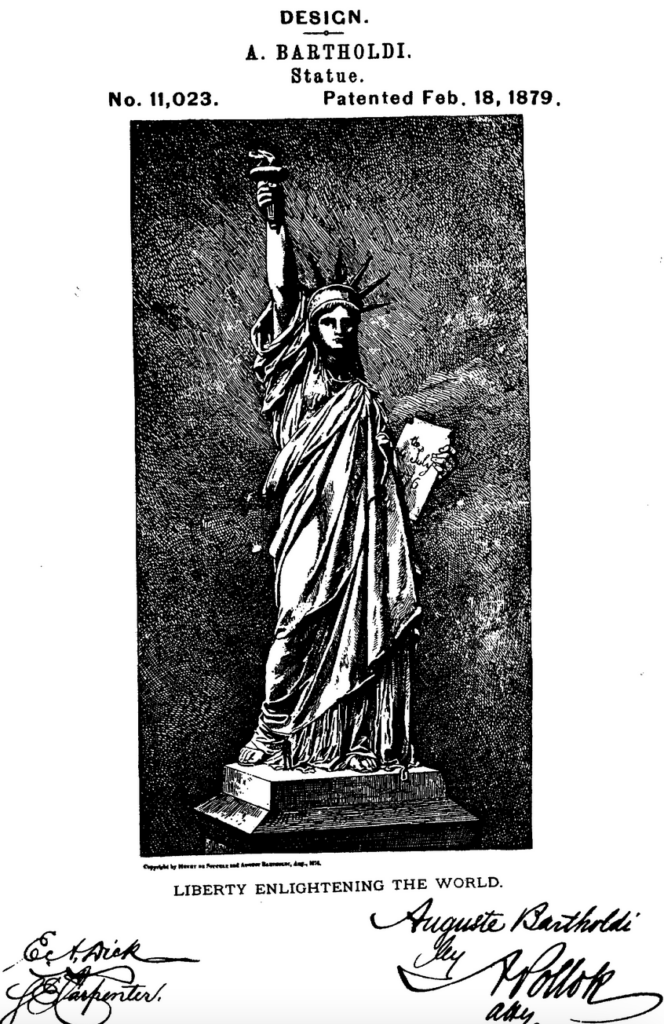
A design patent is simply a patent on the design of an invention. It differs from a utility patent in that it covers how an invention looks rather than what it does. This sounds obvious, but there’s nuance to know.
A design patent is granted for any “original and ornamental design for an article of manufacture.” It is for the visual, ornamental characteristics embodied in, or applied to, an article of manufacture. It may be a shape, an ornamentation, or both. If the design is only surface ornamentation, it must be inseparable from the article; it cannot exist alone, and must be shown applied to an article of manufacture.
Unlike utility patents, which last 20 years, design patents are in force for 15 years.
Since 1842, the USPTO has granted more than 1 million design patents, with 50,000 applications in 2022 alone. Design-patent applications have increased 20% over the last five years.
Early design patents covered wood-stove designs, carpet patterns and oilcloth designs. Two of our favorite design patents have titles that reveal nothing of their fame: Design for a Statue and Guitar.
How to Construct a Design Patent Application
The patent office has strict rules on preparing a design-patent application. A design-patent application has six parts:
1. Drawings or photos
2. Specification
3. Design-application transmittal form
4. Fee transmittal form
5. Application data sheet
6. An oath or declaration
(The forms listed above (#3 — 6) can be found at the USPTO forms site.)
The specification is the written part of an application. It includes:
Preamble
Title
Brief description
Cross-references to related applications
Description of the figures
Feature description
One claim
Images/Drawings/Photos
Photos or drawings may be black and white or color. If color is used, it must be stated in the application. Drawings should include front, rear, right and left sides, as well as top and bottom views, with optional perspective views. If surface shading is used, there may be no solid black shading except to represent the color black. Surrounding matter, or anything that is not claimed as part of the design, is drawn in broken lines.
Once an application has been filed, there’s no changing a drawing to introduce new matter. To be sure drawings are complete and correct before filing, the USPTO recommends hiring a professional draftsperson who specializes in design-patent drawings.
Examination Process (Prosecution)
Upon filing, an inventor receives a filing receipt and is put into the examination queue. This can take as long as two years, sometimes more. During that time, a patent examiner may ask you to make changes to your application, perhaps to change solid to broken lines or other clarifications. This correspondence is formally done in an “office action,” with a deadline for replying. Late replies entail progressive fees.
Any design application that is not original, or that simulates a well-known or naturally occurring object or person, will not be examined; nor will anything that could be considered offensive to any race, religion, sex, ethnic group, or nationality.
Infringement
Infringement is decided by what is called “the ordinary observer rule.” An ordinary observer is usually a designer with experience in the field of a design. If this person considers the photographs and the drawings to be the same design as that of a design patent in force, it is infringement.
According to current statute, infringement of a design patent enables the design-patent owner to seek an infringer’s “total profit” from the infringed design. A court determines infringement by deciding whether the visual impression of a design was copied or modified.
Caution!
Be careful when working with a business or person who is not recognized by the USPTO as a patent practitioner. Some invention-submission outfits may press you to apply for a design patent when it is clear that your invention does not meet the requirements for utility-patent protection. A design patent is not a consolation prize. It represents a unique design that an inventor wants to protect.
When in Doubt…
We recommend consulting the USPTO’s comprehensive guide on design patents. As always, we invite you to call or email Keeley DeAngelo with questions.
Copyright 2024 KeeleyDeAngelo.com
When quoting, please cite keeleydeangelo.com/blog.
No one here is a lawyer, and this is not legal advice. Scott Keeley is a registered patent agent; he does everything a patent attorney does except argue in court.
